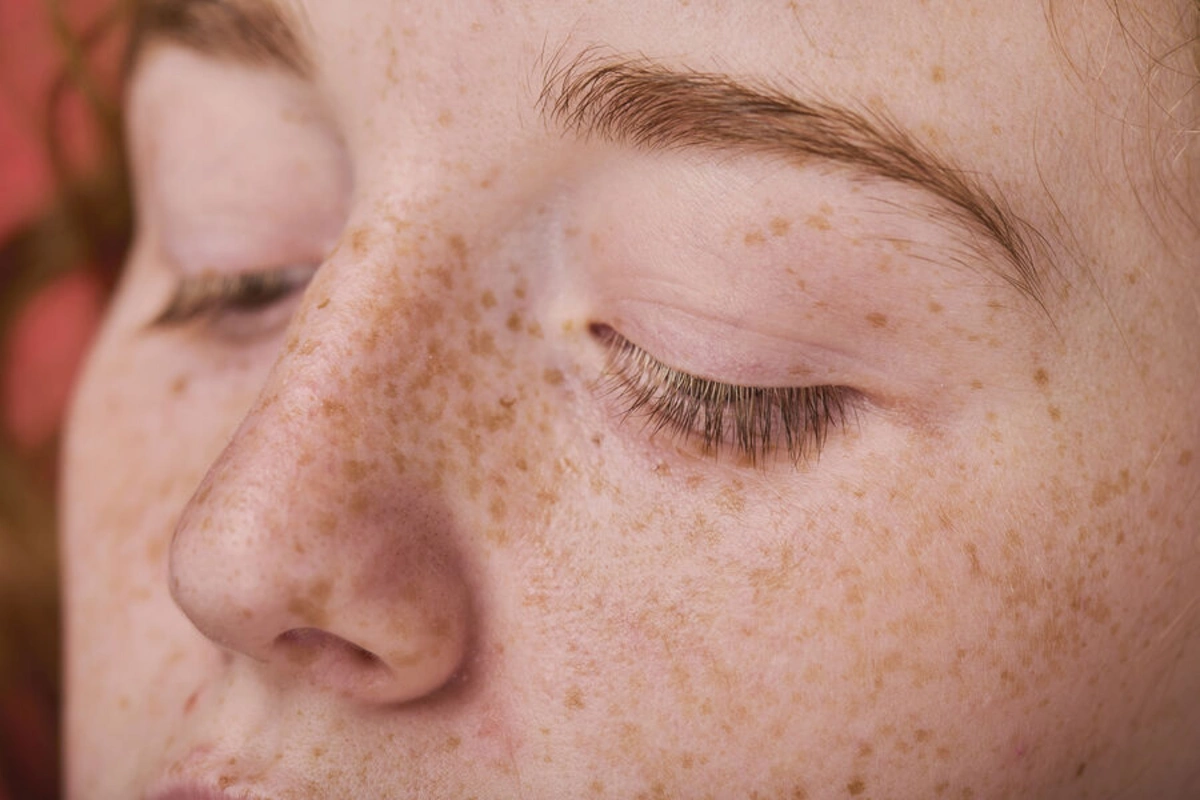Doctor explained when freckles are a warning sign, not just a skin feature

According to the latest international studies, freckles are the result of a combination of genetic predisposition and exposure to ultraviolet radiation. This phenomenon is most common among fair-skinned populations with a certain genetic profile.
As reported by BAKU.WS, Dr. Anna Matveeva in an interview with "Gazeta.Ru" made a clear distinction between harmless freckles and potentially dangerous signs of photodamage.
"Freckles form due to local accumulation of melanin (the pigment responsible for skin color and sun protection). Heredity plays the main role: people with a variant of the MC1R gene (a gene associated with red hair and sensitive skin) have skin prone to spotty pigmentation. Under ultraviolet exposure, the spots become more noticeable, especially in spring and summer. Without sun, they may almost disappear. Ultraviolet light only triggers the manifestation of an innate characteristic," she explained.
The international scientific community confirms that freckles themselves do not pose a health risk. They are a benign form of skin pigmentation. However, their presence signals increased sensitivity to solar radiation. People with freckles usually have skin phototype I-IIA (very fair, prone to burns), which significantly increases the risk of ultraviolet damage. Experts note that freckles are actually the body's protective response to excessive sun exposure.
"If new spots appear after tanning that differ in size or color from the usual ones, this may be a consequence of sun damage. Such formations - solar lentigo (dark persistent spots) - are larger, darker, do not disappear in winter, and have blurred boundaries," said the expert.
Specialists from different countries are unanimous: particular vigilance should be given to areas of skin that grow, change shape, color, or stand out from the rest. In such cases, urgent consultation with a dermatologist is necessary.
Classic freckles are multiple light brown spots 1-3 mm in size. They have a characteristic seasonality: they darken in summer and become paler in winter. They usually appear in childhood, predominantly on exposed areas of skin.
In contrast, pigment spots such as solar lentigo occur in adults after prolonged sun exposure and persist throughout the year. New formations may have an asymmetrical shape, uneven coloration, irregular edges, and a tendency to grow. When such signs are detected, dermatoscopy (examination of the skin with magnification) and regular monitoring by a specialist are recommended.
Is it necessary to remove freckles
"There are no medical indications for removing freckles. It's a matter of external perception. If they cause discomfort, you can use laser, phototherapy (light treatment), or peels (cleansing of the upper layer of skin). Even after removal, with predisposition and contact with the sun, spots may reappear. The main method of prevention is protection from ultraviolet radiation," the doctor believes.
International studies show that ultraviolet radiation penetrates through clouds and glass. Up to 80% of radiation reaches the skin even in cloudy weather. UVA rays (sun rays that cause skin aging) are active throughout the year. Therefore, dermatologists worldwide recommend daily use of sunscreen with SPF 50 and above, especially for people with fair skin. Systematic protection significantly reduces the risk of pigment spots and new formations.
"Special attention to skin changes is required for people with phototype I-IIA (very fair skin, red or light hair, freckles). According to Russian studies, the
Similar News
These Zodiac signs will be taught an important lesson by the Universe: what they should prepare for
In the coming weeks, the Universe has prepared special trials for three Zodiac signs - Aries, Taurus, and Libra. According to astrologers, these life lessons ca...



 Azərbaycanca
Azərbaycanca  По-русски
По-русски  English
English 






